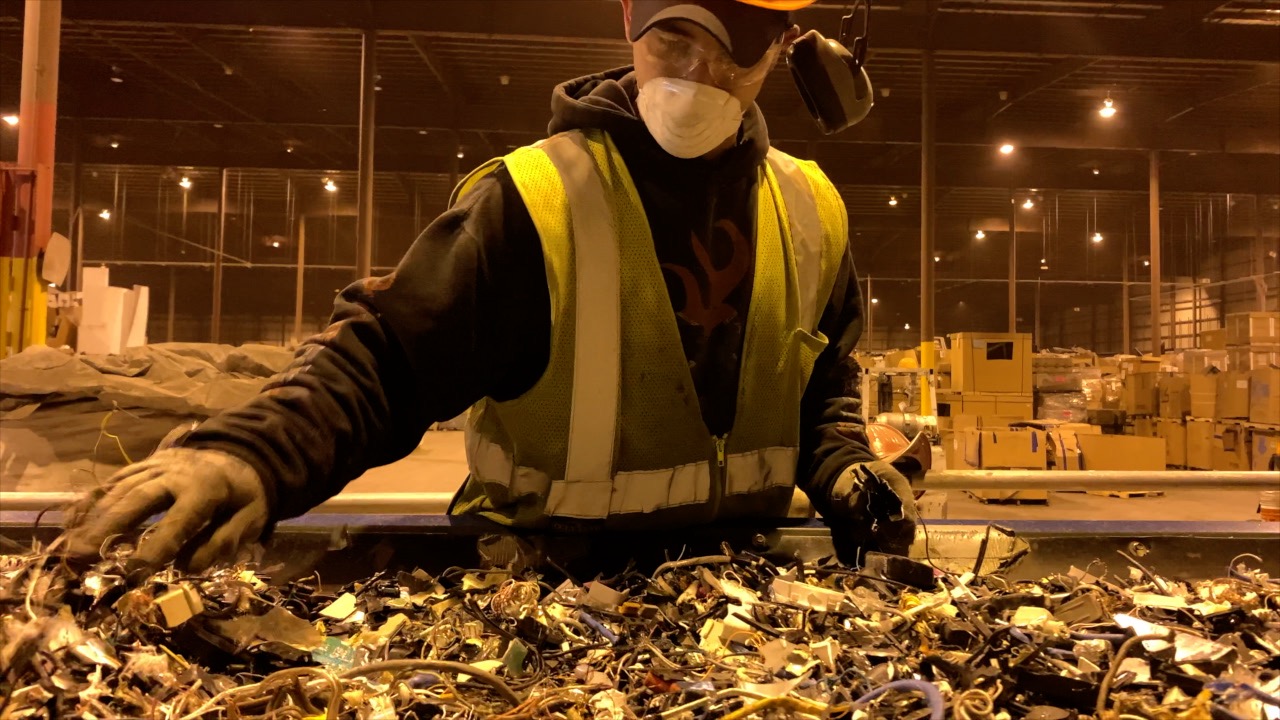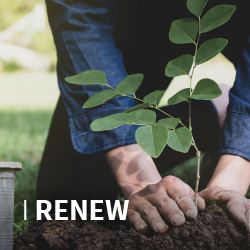Robert Burns noticed a pattern emerging when Sunnking, an electronics recycling company based in Brockport, N.Y., held free collection events. Burns, the company’s marketing manager, would get asked the questions when people dropped off their devices:
“What do you do with [the device]?”
“You erase the hard drives, right?”
To increase transparency with customers, the company put together videos of facility tours, how it erases information from devices, and other pieces of the recycling process. Sunnking’s latest effort is its Live Shredder Camera. Launched Aug. 11, the direct webcam feed allows residents and businesses to remotely watch their devices get destroyed.
A high-definition Toshiba security camera powers the Live Shredder Camera, showing the shredding process’s first stage. Electronics are fed into the machine on a conveyer belt to be broken down. Next they are pushed through a ring mill to be further crushed and pulverized. Then a powerful magnetic pulley divides any steel from the mix, and human experts separate aluminum. Leftover materials are then sorted from the mix and sent for processing and future recycling.
Demonstrating Responsibility
Allowing consumers access to the video feed sheds light on what Sunnking is doing with the devices it collects, and demonstrates that the company recycles the devices responsibly and securely. “When you watch the machine eat, maybe you’ll see your own device or one just like it, so you’ll know exactly how it’s being destroyed. We have a video that shows how we erase data. We’re big on transparency and big on transparency for privacy’s sake,” Burns says.
Though the shredder camera has only been live for a few weeks, Burns has noticed people enjoy watching for more than just seeing their devices pulverized—they find it calming as well. “People will go online and watch things like someone pressure-washing a sidewalk; you don’t know why you have to watch it, but you do,” he notes. “It’s the same thing with the shredder. The feed is oddly satisfying to watch.”

Security & Transparency
Electronics-destruction services are a secure and efficient way to shred and destroy sensitive data and digital media. With all the personal information contained on devices, the last thing a consumer wants is for someone to be able to retrieve or use their data. “Think of it like a check that comes in the mail,” Burns says. “After you deposit it, what do you do? You rip it into five or six small pieces so no one can piece it together. That’s the same concept. We break the device down into 500 or 600 different pieces.” Sunnking’s shredders can process up to 25,000 pounds of electronics daily.
Although other recycling companies post video clips of their process, Burns did not see anyone else showing a continuous feed before the launch of Sunnking’s Live Shredder Camera. “There was nothing out there that was just a continuous feed. We want to be able to show you continuously how much stuff we’re getting, and what we’re doing with all the devices.”
Sunnking has a plethora of devices. With facilities in Brockport, Buffalo, and Utica, N.Y., the company specializes in collecting, refurbishing, reselling, and recycling electronic products from residential, commercial, and municipal customers. The company’s state-of-the-art shredder cuts through recycled hard drives, computers, tablets, TVs, and most other retired gadgets. According to Burns, the company shreds about 500,000 pounds of electronics per month. “And that’s a bit slow for us, so we expect the number to go up,” he adds.
As viewers enjoy watching the machine chow down, it may also help them recognize the enormous number of devices companies like Sunnking continually process. “We have the shredder running for most of the day, and our warehouse is stocked with devices,” Burns explains. “We hope people realize just how many devices we have, and why it’s important to do the right thing and recycle them properly.”
Inside the Process
For those asking questions at collection events, Burns hopes this will highlight how Sunnking practices what it preaches. “The camera will show everything, even when we get backed up and realize we’ve thrown too much in and need to slow down a bit. It’s real life. There’s a good chance you’ll spot some of our employees walking around the machine, too,” Burns says. “Viewers can watch how smooth flat-panel TVs and phones shred down or how, sometimes, desktop computers take a little more work … and there’s going to be times we need to put down the camera or repair the machine; it happens, but hopefully won’t be for long.”
The company hopes these efforts will make viewers more comfortable since they can see what happens to their devices after Sunnking gets them. “There’s currently a big gap with transparency regarding the recycling process. If this helps close the gap and opens the door, it’s a good first step,” Burns states.
Camera Ready
Though Sunnking is the first recycling company to launch a live video feed of its shredder, the campaign may inspire other recyclers. “Maybe it pushes another recycler somewhere else to do something similar, and then all over the country, and maybe even the world, people will feel better about their devices,” Burns says. “If it sets up the next recycling company to do it well or show something else in the process, that’s what we want. We’re happy to be the guinea pigs.”
In the future, the company may add different camera angles to the feed. “[The current] one provides a view into the first part of the shredder. We may add another camera at the very end to show our teams picking out the aluminum when the final shards are sent to processing,” Burns explains.
If you’re interested in watching Sunnking’s shredder eat electronics, tune into Stream the Shred from 8 a.m. to 3:30 p.m. EDT Monday through Friday.
Images courtesy of Sunnking. Featured image caption: Sunnking employee sorts through shredded devices. Body image caption: Shredded plastics and hard drives.













